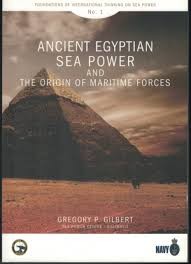Provides an overview of Ancient Egyptian sea power. By considering the written and archaeological evidence, an explanation for the origin of maritime forces is developed. Examines the contribution of sea power furing the formation of the Egyptian state, maritime cultural customs and beliefs, changes in maritime technologies and the maritime operations of the Egyptian maritime forces.
The book outlines a series of firsts for sea power that the Egyptian navy set a precedent for. It was the first to conduct ‘joint’ operations, first to use manoeuvre as a maritime warfare approach, first to conduct maritime power projection operations in foreign lands, first to blockade an enemy stronghold and first to conduct amphibious operations. This book outlines the applicability of sea power during the formation of the Egyptian state, its central government and state building processes. The earliest Egyptian boats were rafts made from papyrus reeds used by hunter/gatherer groups. During the Neolithic period (approx. 5500 BCE) wooden boats were developed. In the Predynastic period (3700 to 3050 BEC) ceremonial boats and war-canoes were also used. The peak of ancient Egyptian warship design was during the reign of Rameses III. These ships were 25m long and 4.5m wide. They had loose-footed sails, 17 oarsmen a side and a lookout post on the mast-head. Naval organisation, titles, roles and terminology developed also; in similar ways to the West. However, unlike Western navies, a distinction was never made between the army and navy. Officers would often command both in their careers within a single Egyptian military.” pp. 164 illusts #0120
